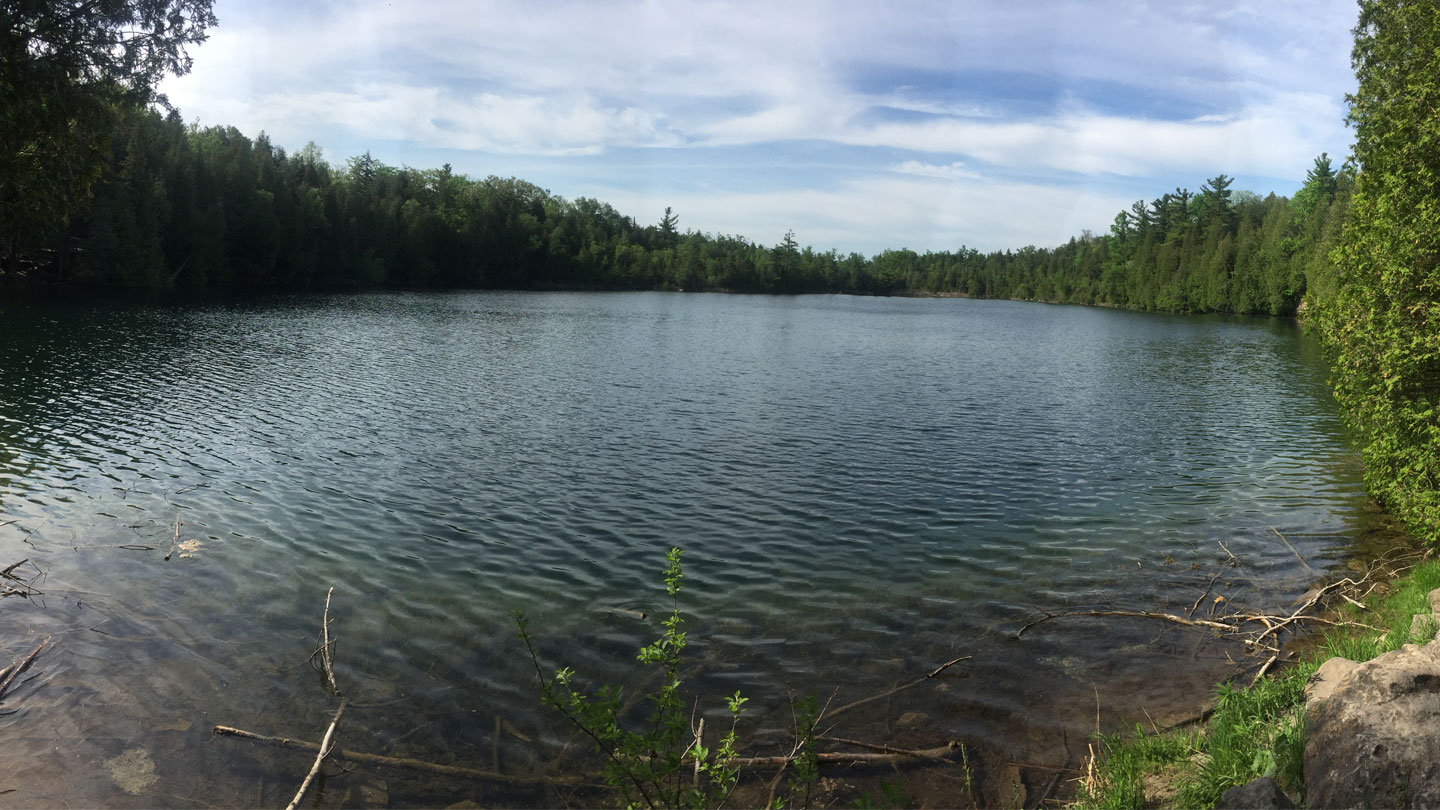Scientists are on the brink of ushering in a new era in geology, where human influence takes center stage as the primary driver of Earth’s climate and environment.
At a press conference during the Max Planck Society Conference for a Sustainable Anthropocene in Berlin, researchers have identified Crawford Lake in Ontario, Canada, out of 12 potential sites around the world, as the candidate to mark the official beginning of the Anthropocene. This proposed geological epoch is recognized to have started in the 1950s.
Crawford Lake’s sediment contains one of the most accurate records of human-induced changes to Earth. From spikes in plutonium from nuclear weapons testing to traces of ash from burning fossil fuels, heavy metals, and microplastics, the lake bottom holds critical evidence.
However, the Anthropocene has not yet been officially recognized as a geological epoch. More committees and authorities need to approve the proposed epoch before it can be included in the geologic time scale. This would effectively conclude the Holocene Epoch, which has spanned approximately 12,000 years and encompasses the development of human civilization since the last ice age.
The term “Anthropocene” was first coined in the early 2000s to describe the ongoing era of global-scale human impact on the planet. However, it lacked a clear geological definition, leading to its adoption in various other disciplines. Addressing this gap, earth scientist Simon Turner from University College London explains that defining the Anthropocene has been a priority over the years.
In 2009, the International Commission on Stratigraphy established a committee to characterize the Anthropocene and evaluate its suitability for inclusion in the geologic time scale. After more than a decade, the committee has now selected Crawford Lake as the Anthropocene’s “Global Boundary Stratotype Section and Point.” This reference site showcases a distinct change in its rock, ice, or other layers, symbolizing the beginning of a new geological era.
Each of the candidate sites, ranging from coral reefs to ice cores to peat deposits, holds a remarkable historical account of human activities within its layers. Choosing Crawford Lake was not an easy task, as Turner, the committee’s secretary, describes it as akin to selecting a favorite child.
Among its unique qualities, Crawford Lake’s muddy layers possess an exceptional record of human activity. Every summer, the water’s warm temperatures and pH levels result in the formation of mineral crystals near the surface, which then descend to the lake’s bottom undisturbed. Turner compares these layers to tree rings, as they can be accurately dated by counting backwards from the surface. The sediments reveal a significant increase in radioactivity and other signs of human influence starting from the early 1950s.
However, not all scientists agree that the Anthropocene began in the 1950s, or that it should be strictly defined as a geological term. Paleoecologist Jacquelyn Gill from the University of Maine believes that drawing a hard line in the geological timeline creates a binary distinction, overlooking the fact that human impacts predate this proposed starting point. Gill argues for the retention of an informal and flexible concept, as is currently used in disciplines beyond geology, which can be a more powerful tool and avoid confusion about preceding events.
Nevertheless, the endeavor to define the Anthropocene within geological terms underscores humanity’s rapid and profound impact on the planet. As Turner puts it, “We have become a geological force.”
Denial of responsibility! SamacharCentrl is an automatic aggregator of Global media. In each content, the hyperlink to the primary source is specified. All trademarks belong to their rightful owners, and all materials to their authors. For any complaint, please reach us at – [email protected]. We will take necessary action within 24 hours.

Shambhu Kumar is a science communicator, making complex scientific topics accessible to all. His articles explore breakthroughs in various scientific disciplines, from space exploration to cutting-edge research.


